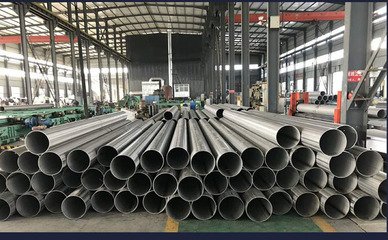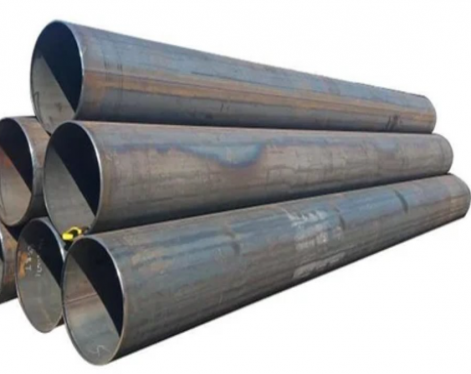Bright heat treatment is that the stainless steel tube should be heated in a vacuum furnace or ammonia decomposition, inert gas, and reducing atmosphere to avoid oxidation, so as to obtain a bright surface heat treatment effect
Bright heat treatment classification
The so-called bright heat treatment includes: bright annealing, bright normalizing, bright quenching, bright tempering. In order to prevent the oxidation and decarburization of the surface of the stainless steel pipe, so that it does not lose its metallic luster, heat treatment should be carried out in the protective atmosphere or vacuum as mentioned above.
Bright annealing is generally used in the annealing of bright silver steel bars (drawn, cut and ground), thin plates or finished products. In addition, this method is also used for spheroidizing annealing of rods and wires for cold forging. Bright normalizing, quenching and tempering are mainly suitable for commercialized parts, not suitable for steel products that are generally used as blanks.
Coating protection
1. General requirements for coating
The coating should be resistant to high temperature, anti-oxidation, stable, not react with the surface of the parts, and can prevent the surface of the stainless steel pipe from burning, decarburization or formation of scale when heated. The paint should be safe, non-toxic, low cost and easy to operate. The coating has a certain strength at room temperature, and it is not easy to fall off during operation, but it can fall off by itself after one treatment.
2. Coating composition
Generally, heat treatment coatings are mostly prepared by mixing organic materials and inorganic materials. This type of coating can form a uniform and complete coating through an organic binder at room temperature. During heat treatment and heating, the organic components in the coating are decomposed or carbonized, while the remaining components such as glass, ceramics and other materials are transformed into a uniform and dense inorganic coating, which can isolate the effect of the surrounding atmosphere on the metal. After cooling, due to the difference in thermal expansion coefficient between the coating and the stainless steel pipe, the coating can fall off by itself, thereby protecting the surface of the treated stainless steel pipe.

Inert gas protection
Commonly used inert gases are Ar and He. Since N2 hardly reacts with steel, N2 is an inert gas for steel. Use an inert gas to protect and heat in a bright state. Special attention should be paid to the type and quantity of impurities in the gas. The volume fraction of oxygen should be lower than (1~2)X10, and the moisture content should be below the dew point -70°C.
Vacuum heat treatment
The biggest advantage of vacuum heat treatment is that it can get a good bright surface. When the stainless steel tube is heated in a vacuum, deoxidation, grease decomposition, and oxide dissociation will occur. Bright metal surface can be obtained after vacuum heat treatment. However, attention should be paid to the influence of the evaporation of alloying elements. For example, the phenomenon of dechromation will occur during vacuum heat treatment of stainless steel tubes, which will significantly reduce the corrosion resistance.
Heating mainly depends on radiation, and the heat inside the metal that does not directly face the heating element can only rely on heat conduction. And the cooling is also radiative cooling, so much slower than normal cooling. This characteristic is okay for annealing, but not for general heat treatment.
Bright heat treatment classification
The so-called bright heat treatment includes: bright annealing, bright normalizing, bright quenching, bright tempering. In order to prevent the oxidation and decarburization of the surface of the stainless steel pipe, so that it does not lose its metallic luster, heat treatment should be carried out in the protective atmosphere or vacuum as mentioned above.
Bright annealing is generally used in the annealing of bright silver steel bars (drawn, cut and ground), thin plates or finished products. In addition, this method is also used for spheroidizing annealing of rods and wires for cold forging. Bright normalizing, quenching and tempering are mainly suitable for commercialized parts, not suitable for steel products that are generally used as blanks.
Coating protection
1. General requirements for coating
The coating should be resistant to high temperature, anti-oxidation, stable, not react with the surface of the parts, and can prevent the surface of the stainless steel pipe from burning, decarburization or formation of scale when heated. The paint should be safe, non-toxic, low cost and easy to operate. The coating has a certain strength at room temperature, and it is not easy to fall off during operation, but it can fall off by itself after one treatment.
2. Coating composition
Generally, heat treatment coatings are mostly prepared by mixing organic materials and inorganic materials. This type of coating can form a uniform and complete coating through an organic binder at room temperature. During heat treatment and heating, the organic components in the coating are decomposed or carbonized, while the remaining components such as glass, ceramics and other materials are transformed into a uniform and dense inorganic coating, which can isolate the effect of the surrounding atmosphere on the metal. After cooling, due to the difference in thermal expansion coefficient between the coating and the stainless steel pipe, the coating can fall off by itself, thereby protecting the surface of the treated stainless steel pipe.

Inert gas protection
Commonly used inert gases are Ar and He. Since N2 hardly reacts with steel, N2 is an inert gas for steel. Use an inert gas to protect and heat in a bright state. Special attention should be paid to the type and quantity of impurities in the gas. The volume fraction of oxygen should be lower than (1~2)X10, and the moisture content should be below the dew point -70°C.
Vacuum heat treatment
The biggest advantage of vacuum heat treatment is that it can get a good bright surface. When the stainless steel tube is heated in a vacuum, deoxidation, grease decomposition, and oxide dissociation will occur. Bright metal surface can be obtained after vacuum heat treatment. However, attention should be paid to the influence of the evaporation of alloying elements. For example, the phenomenon of dechromation will occur during vacuum heat treatment of stainless steel tubes, which will significantly reduce the corrosion resistance.
Heating mainly depends on radiation, and the heat inside the metal that does not directly face the heating element can only rely on heat conduction. And the cooling is also radiative cooling, so much slower than normal cooling. This characteristic is okay for annealing, but not for general heat treatment.









